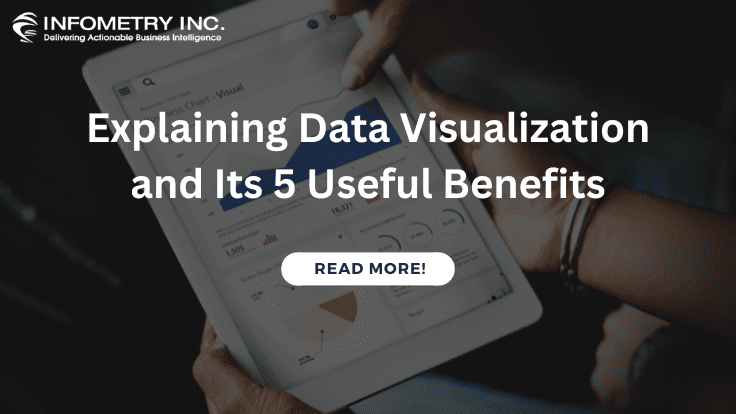
Explaining Data Visualization and Its 5 Useful Benefits
March 2, 2023
PowerCenter and Data Governance: Best Practices and Tools
March 3, 2023Data Visualization Trends for Upcoming Future
Over the years, data visualization has affected significant associations and medium and small enterprises. Every day 2.5 quintillion bytes of information are generated worldwide, which will go wasted if not put in a legitimate structure.
In a time of big data technologies, Data Aggregation Tools & Analysis ,such as data visualization, are fundamental for examining a considerable measure of data and making defined choices.
A new report on worldwide market data visualization tools surveyed a definitive analysis of the business at an overall and regional level. The eventual fate of the data visualization industry is supposed to enrol a CAGR of more than 9% during the 2019-2024 forecast years.
Today we’re dealing with big data. Just 6% of all information is supposed to come from books and printed materials. The other 94% is advanced. 90% of all information has been created and stored digitally within the past three years. Also, 2.5 quintillion bytes of data are created day to day. To put it plainly, this adds to how much data we have accessible. Data visualization takes raw data and shapes it to recount a visual story. Above all, it offers actionable insights to aid business decisions.
This guide will explain the five most crucial data visualization trends for 2023 and beyond.
Here Are the Top 5 Data Visualization Trends for Upcoming Future 2023
Interactive Visualizations
Interactivity is a crucial trend in data visualization, allowing users to explore data dynamically and intuitively.
Data Representation with AI
Using AI to generate data visualizations automatically is becoming more common, as it reduces the time and effort required to create visualizations.
Emphasizing Data Storytelling
Data storytelling is becoming a key focus of data visualization, emphasizing creating compelling narratives to communicate insights effectively.
Use of Extended Reality (XR) technologies
Extended reality (XR) technologies, such as augmented and virtual reality, are becoming increasingly popular for data visualization, providing new ways to experience and interact with data.
Increased Use of Open-Source Tools
Open-source tools are becoming more popular in data visualization as they provide a cost-effective and customizable alternative to proprietary tools.
How Does Data Visualization Impact Your Businesses?
Visual analysis and exploration techniques are taking a completely new structure and shape. Developing wellsprings of knowledge, innovative progressions, the strength of cameras and sensors, and the multi-layered approach assist data researchers and experts with the advantages of analytics and insights, with data visualization playing a significant role.
Studies indicate that 90% of the human brain handles data from visuals, and insightfully planned infographics make a 30% better decision than plain text. These details address how representation can be helpful for your business to accomplish new levels in the data-driven future.
A Look at the Data Visualization Future
Nowadays, the simple collection of data from different sources no longer represents a challenge to data researchers. The undeniably significant factor in the years to come will be the quality of its presentation.
Pushing ahead, we’ll see emerging innovations like VR, AR and AI play a more significant role in effective data visualization.
Future trends will have AI and machine learning use their Normal Language Processing capacities to produce insights. AR and VR will give visual regulators, permitting viewers to explore data on a new level.
This will prompt considerably more informed choices guaranteeing business success. Business intelligence has a bright future for sure.
Conclusion
Data analysis and visualization have become a vital part of the business domain that governs numerous aspects of our lives in this advanced age.
As associations try to acquire an upper hand by getting insights from large data sets, visualization becomes an inexorably significant part of their tasks. The market size for data visualization software is likewise anticipated to develop by over 11% every year, from $5.9 billion in 2021 to $10.2 billion in 2026.
As the innovation develops, so will the visual representations of data. To acquire the high ground, keep an eye on and perhaps even implement some trends in data visualization discussed here. The better you understand information, the simpler it will be to adapt to any business challenges you might confront.




